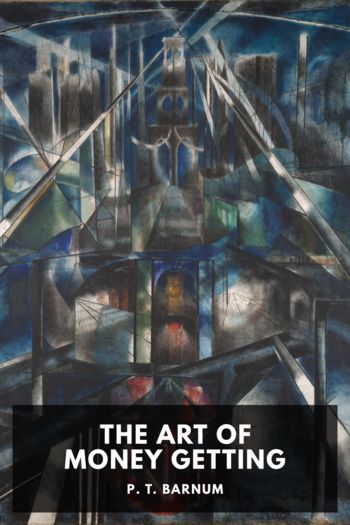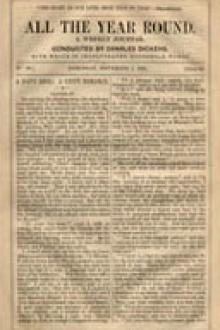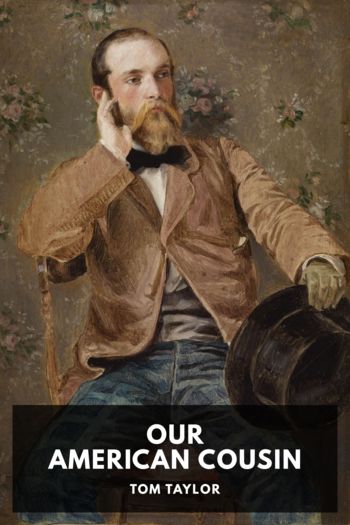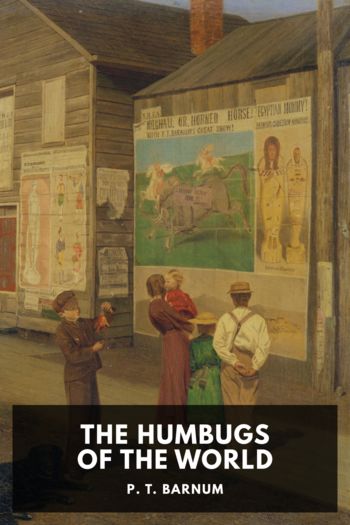Struggles and Triumphs by P. T. Barnum (love novels in english TXT) 📕

- Author: P. T. Barnum
Book online «Struggles and Triumphs by P. T. Barnum (love novels in english TXT) 📕». Author P. T. Barnum
During my connection with Proler, I became acquainted with a remarkable young dancer named John Diamond. He was one of the first and best of the numerous negro and “breakdown” dancers who have since surprised and amused the public, and I entered into an engagement with his father for his services, putting Diamond in the hands of an agent, as I did not wish to appear in the transaction. In the spring of 1840, I hired and opened the Vauxhall Garden saloon, in New York, and gave a variety of performances, including singing, dancing, Yankee stories, etc. In this saloon Miss Mary Taylor, afterwards so celebrated as an actress and singer, made her first appearance on the stage. The enterprise, however, did not meet my expectation and I relinquished it in August.
What was to be done next? I dreaded resuming the life of an itinerant showman, but funds were low, I had a family to care for, and as nothing better presented I made up my mind to endure the vexations and uncertainties of a tour in the West and South. I collected a company, consisting of Mr. C. D. Jenkins, an excellent singer and delineator of Yankee and other characters; Master John Diamond, the dancer; Francis Lynch, an orphan vagabond, fourteen years old, whom I picked up at Troy, and a fiddler. My brother-in-law, Mr. John Hallett, preceded us as agent and advertiser, and our route passed through Buffalo, Toronto, Detroit, Chicago, Ottawa, Springfield, the intermediate places, and St. Louis, where I took the steamboat for New Orleans with a company reduced by desertions to Master Diamond and the fiddler.
Arriving in New Orleans, January 2, 1841, I had but $100 in my purse, and I had started from New York four months before with quite as much in my pocket. Excepting some small remittances to my family I had made nothing more than current expenses; and, when I had been in New Orleans a fortnight, funds were so low that I was obliged to pledge my watch as security for my board bill. But on the 16th, I received from the St. Charles Theater $500 as my half share of Diamond’s benefit; the next night I had $50; and the third night $479 was my share of the proceeds of a grand dancing match at the theater between Diamond and a negro dancer from Kentucky. Subsequent engagements at Vicksburg and Jackson were not so successful, but returning to New Orleans we again succeeded admirably and afterwards at Mobile. Diamond, however, after extorting considerable sums of money from me, finally ran away, and, March 12th, I started homeward by way of the Mississippi and the Ohio.
While I was in New Orleans I made the acquaintance of that genial man, Tyrone Power, who was just concluding an engagement at the St. Charles Theater. In bidding me farewell, he wished me every success and hoped we should meet again. Alas, poor Power! All the world knows how he set sail from our shores, and he and his ship were never seen again. Fanny Ellsler was also in New Orleans, and when I saw seats in the dress circle sold at an average of four dollars and one-half, I gave her agent, Chevalier Henry Wyckoff, great credit for exciting public enthusiasm to the highest pitch and I thought the prices enormous. I did not dream then that, within twelve years, I should be selling tickets in the same city for full five times that sum.
At Pittsburg, where I arrived March 30th, I learned that Jenkins, who had enticed Francis Lynch away from me at St. Louis, was exhibiting him at the Museum under the name of “Master Diamond,” and visiting the performance, the next day I wrote Jenkins an ironical review for which he threatened suit and he actually instigated R. W. Lindsay, from whom I hired Joice Heth in Philadelphia in 1835, and whom I had not seen since, though he was then residing in Pittsburg, to sue me for a pipe of brandy which, it was pretended, was promised in addition to the money paid him. I was required to give bonds of $500, which, as I was among strangers, I could not immediately procure, and I was accordingly thrown into jail till four o’clock in the afternoon, when I was liberated. The next day I caused the arrest of Jenkins for trespass in assuming Master Diamond’s name and reputation for Master Lynch, and he was sent to jail till four o’clock in the afternoon. Each having had his turn at this amusement, we adjourned our controversy to New York where I beat him. As for Lindsay, I heard nothing more of his claim or him till twelve years afterwards when he called on me in Boston with an apology. He was very poor and I was highly prosperous, and I may add that Lindsay did not lack a friend.
I arrived in New York, April 23rd, 1841, after an absence of eight months; finding my family in good health, I resolved once more that I would never again be an itinerant showman. Three days afterwards I contracted with Robert Sears, the publisher, for five hundred copies of “Sears’ Pictorial Illustrations of the Bible,” at $500, and accepting the United States agency, I opened an office, May 10th, at the corner of Beekman and Nassau Streets, the site of the present Nassau Bank. I had had a limited experience with that book in this way: When I was in Pittsburg, an acquaintance, Mr. C. D. Harker, was complaining that he had nothing to do, when I picked up a New York paper and saw the advertisement of “Sears’s Pictorial Illustrations of the Bible, price $2 a copy.” Mr. Harker thought he could get subscribers, and I bought him a specimen copy, agreeing to furnish him with as many as he wanted at $1.37½ a





Comments (0)